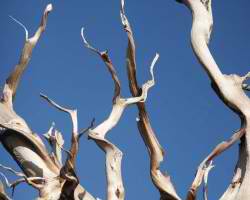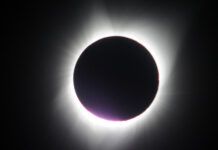From Imperial Beach northward to Santa Barbara and as far east as San Bernardino, Southern California is essentially one large urban sprawl – home to 22.7 million residents or about 60 percent of the population of the state and seven percent of the population of the United States.
If you are an astronomy enthusiast or photographer and seek pristine dark sky views, you’re pretty much out of luck because of the accompanying massive light pollution.
An hour’s drive from San Diego will place you in the nearby mountains but even there light pollution is evident.
Northwestern New Mexico has long been touted by astrophotographers for its superb nocturnal viewing. The same is true for the Great Basin region of central Nevada.
But California also is home to dark skies – and closer than you might think.
The area around Bishop in Inyo County is renowned to possess some of the best dark sky viewing in the state, if not the entire United States.
With summer approaching, warmer nighttime temperatures should lure shutterbugs out of their winter hibernation. In fact, urbanites can make a rewarding mini-vacation out of a three- or four-day weekend with a visit to the Ancient Bristlecone Pine Forest’s Schulman Grove and nightly deep-sky viewing from nearby Grandview campground.
A paved road leads from the Grandview campground to Schulman Grove, though it’s about a 1,000-foot climb over the five-mile distance. There are scenic overlooks of the snow-capped Eastern Sierra mountain ranges.
There are three self-guided trails that leave from the visitors center at Schulman Grove. The Discovery Trail and Methuselah Walkl start at the same point. The Discovery Trail is a one-mile loop that rises several hundred feet and includes trees as old as 4,000 years old. The 4.5-mile Methuselah Walk loop is a bit more of an adventurous hike, though perhaps more rewarding.
Visitors who take the Methuselah Trail can view the oldest living forest known in the world, with trees older than 5,000 years old.
These aren’t just ordinary trees.
The Great Basin Bristlecone Pine is able to survive in some of the harshest conditions at elevations from 9,800 to 11,000 feet. They endure fire, snow, high winds, freezing conditions and grow in dry alkaline soil (including limestone).
Because of their extreme age, eons of weathering have deformed the oldest trees into grotesque shapes, especially the bare upper branches and trunks.
Due to their gnarled, dwarf growth pattern, the oldest trees are actually among the smallest in the grove.
The oldest tree has been dated at 5,064 years old, though its location is kept secret for security reasons.
The Ancient Bristlecone Pine Forest actually contains two groupings of trees. The Patriarch Grove lies 12 miles to the north of the Schulman Grove. The two sites are connected by a dirt road, so allow adequate travel time.
The Patriarch Grove contains the largest bristlecone pine, dubbed the Patriarch tree. Its isolation in a moonlike landscape makes it a photography favorite, especially in early morning light.
It is possible to explore both groves in one day, though you’ll likely have to get an early morning start.
White Mountain, at 14,252 feet high, lies further north along the same dirt road. It is the third-highest peak in California and offers the easiest climb (class 1) for hikers along a 14-mile approach trail with an elevation climb of 2,600 feet.
The Grandview campground lies at 8,500 feet elevation. The nearest city is Bishop, population 3,900, which lies 15 miles to the west but is shielded by intervening mountain peaks.
To the west is the sparsely populated Great Basin region of Nevada.
Temperatures in the lower desert around Bishop can climb to more than 100 degrees during summer months but temperatures at higher elevations near the bristlecone pines are much more hospitable. The low humidity present in the region allows for dark, highly transparent skies at night.
With a camera setting at high ISO, stars as faint as 10th magnitude can be captured in just a few seconds.
The Milky Way is a grand show from the Grandview campground on a moonless night, especially our galaxy’s hub in the direction of the constellation of Sagittarius. A wide-angle 20- to 30-second exposure at 3200 ISO, for instance, will show regions of densely-packed stars, star clusters and the telltale red hydrogen-rich regions of the Milky Way’s galactic plane in which our solar system resides.
Visitors will need to bring in their own drinking water as the Grandview campground does not have potable water. Reservations are not required. The campground, which contains 23 campsites, is open on a first come, first serve basis from mid-May through the end of November. The campground closes when the first heavy snowfall closes White Mountain Road. There is no camping fee, though a donation of $5 per night is recommended.
The busiest months are July and August.
To reach the Ancient Bristlecone Pine Forest from San Diego, take either Interstate 5 or Interstate 15 north to U.S. 395 north, turn east onto Highway 168 and travel 13 miles. It’s about a seven-hour drive total covering 375 miles.
A sign marks the turnoff for the Ancient Bristlecone Pine Forest. When you see the sign, turn left on White Mountain Road and travel an additional five miles. A word of warning: If you fail to make the turn, you’ll continue heading east on Highway 168 until you reach the Mono County line near the Nevada border.
Call (760) 873-2500 for information.















